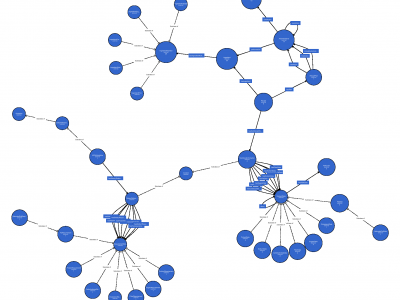Datasets
Standard Dataset
CRWB HINDI 1580 dish classification

- Citation Author(s):
- Submitted by:
- Andres Frederic
- Last updated:
- Sun, 02/09/2025 - 17:13
- DOI:
- 10.21227/tb2c-vb57
- Data Format:
- License:
 75 Views
75 Views- Categories:
- Keywords:
Abstract
This dataset provides a comprehensive exploration of 1580 distinct Hindi dish categories, offering a cultural and culinary lens into India's rich gastronomic heritage. The classification encapsulates a diverse array of dishes spanning regional, seasonal, and festive cuisines, while highlighting the integral role of ingredients, cooking techniques, and cultural narratives.
The analysis is structured into broad culinary themes such as staple dishes (roti, rice, and lentils), vegetarian delicacies (sabzi, curries), non-vegetarian specialties (kebabs, curries), street food (chaat, samosa, kachori), and traditional sweets (ladoo, barfi, halwa). Special attention is paid to lesser-known regional varieties, fermented foods, pickles, and beverages, showcasing the ingenuity of Hindi cuisine in leveraging locally sourced ingredients and sustainable cooking practices.
This classification not only serves as a reference for culinary enthusiasts but also lays the groundwork for leveraging AI in the semantic categorization of recipes, regional cooking styles, and nutritional profiling. It aims to bridge culinary traditions with modern technology for global appreciation and preservation of India's Hindi-speaking culinary heritage.
This dataset compiles and organizes 1580 Hindi dish categories in a standardized format to celebrate and document the culinary diversity of Hindi-speaking regions. Each dish is represented by a unique identifier (ID), its English category name, and the corresponding Hindi category name. This structured taxonomy bridges the linguistic and cultural essence of Indian cuisine with modern digital tools.
Example format:1406090820, Andhra Chicken Fry, आंध्र चिकन फ्राई
The classification spans a variety of dish types, including staples, regional specialties, street foods, festive dishes, and desserts. This work aims to support the development of multilingual recipe databases, AI-based culinary applications, and cultural studies.
Instructions for Structuring the Categories
-
Column Definitions:
- ID: A unique 10-digit alphanumeric code for each dish (e.g.,
1406090820). - English Dish Name: The category name in English, using proper case (e.g.,
Andhra Chicken Fry). - Hindi Dish Name: The corresponding Hindi name written in Devanagari script (e.g.,
आंध्र चिकन फ्राई). Ensure accurate transliteration and context-specific meaning.
- ID: A unique 10-digit alphanumeric code for each dish (e.g.,
-
Category Types:
Organize dishes into broader groups for consistency:- Staple Foods: Rice, bread, and lentil-based dishes (e.g., Dal Tadka, Roti).
- Vegetarian Dishes: Curries, dry sabzis, and snacks (e.g., Aloo Gobi, Paneer Tikka).
- Non-Vegetarian Dishes: Curries, grills, and snacks (e.g., Chicken Biryani, Mutton Rogan Josh).
- Street Food: Chaat, pakoras, samosas, etc. (e.g., Pani Puri, Kachori).
- Sweets and Desserts: Traditional mithai and regional desserts (e.g., Gulab Jamun, Jalebi).
- Regional Specialties: Unique dishes from specific Indian states (e.g., Andhra Chicken Fry, Malvani Fish Curry).
-
Data Entry Guidelines:
- Ensure consistent use of punctuation and capitalization.
- Verify Hindi translations for accuracy and cultural appropriateness.
- Avoid duplicates by cross-checking ID and dish names.
-
Examples of Data Entries:
1406090821, Paneer Butter Masala, पनीर बटर मसाला1406090822, Rajma Chawal, राजमा चावल1406090823, Pani Puri, पानी पुरी1406090824, Jalebi, जलेबी
-
Tools and Software Suggestions:
- Use Excel or Google Sheets to maintain a structured database.
- Apply filters and validation rules to avoid duplicates or errors.
- Use online transliteration tools for Hindi (e.g., Google Input Tools).
- Cross-reference translations with culinary glossaries or native speakers for authenticity.
-
Quality Assurance:
- Conduct a peer review of the completed list to ensure accuracy.
- Include regional experts for validating lesser-known dishes.
-
Applications and Usage:
- Recipe Databases: For food tech applications and AI-powered tools.
- Cultural Documentation: To preserve linguistic and culinary traditions.
- Educational Content: For culinary studies or language learning resources.
This structured taxonomy provides a foundation for preserving India's rich culinary heritage while enabling innovative technological applications in food science and AI.








